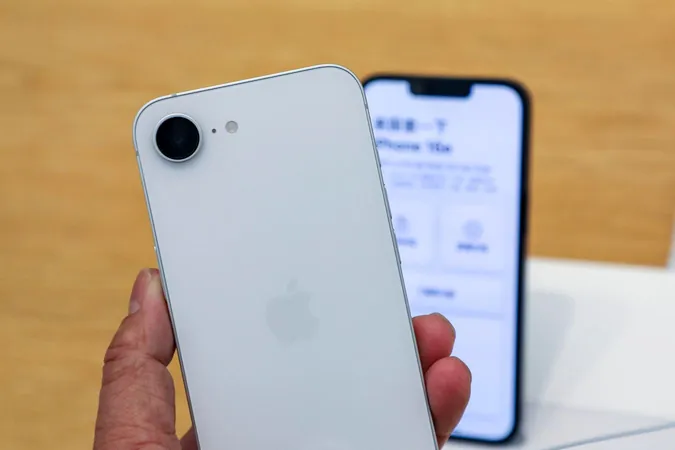
How Blind People Understand Color: Shocking New Study Reveals Language's Hidden Power!
2025-04-28
Author: William
Unlocking the Mystery of Color Perception
Did you know that our brains instinctively link colors with descriptive words? Picture red and orange paired with "hot" and "warm," or blue linked to "cool" and "cold." These associations are so ingrained that even individuals born without sight display surprisingly similar connections.
A Groundbreaking Study
Researchers at the University of Wisconsin-Madison embarked on a fascinating quest to explore how language informs our understanding of color. Utilizing complex mathematical and computational techniques, including the cutting-edge OpenAI GPT-4 language model, they aimed to uncover the roots of these intriguing associations.
Their study, recently published in the journal Communications Psychology, revealed that the links between color and adjectives are deeply embedded in the structure of language—far beyond what we directly observe.
The Language Behind Color Associations
Researchers Qiawen Liu, Jeroen van Paridon, and Gary Lupyan highlighted a striking phenomenon: despite lacking visual experiences, people born blind often draw upon language to form color-adjective associations. "Colors like red are intrinsically linked to adjectives like hot, even for those who have never seen them," they noted. This correlation appears to stem from how language itself is constructed.
Modeling Color Perception Through Text
To dive deeper, the researchers employed word embeddings—mathematical models that capture how words interact within texts. By analyzing a dataset of English writings, they compared their findings to associations made by both blind and sighted individuals.
Utilizing advanced projection methods, they successfully correlated color-adjective links across different speakers, showing that these associations are not solely based on direct visual experience.
Fiction's Surprising Impact
Interestingly, the study revealed that word embeddings derived from fiction texts aligned more closely with human associations than the predictions made by GPT-4. By analyzing various texts, they pinpointed which sentences were most influential in shaping color-adjective connections.
The Power of Indirect Learning
What’s remarkable is that these associations often arise from indirect relationships—second-order co-occurrences. For instance, rather than encountering "red" and "hot" in the same sentence, individuals might link them due to encountering "red" alongside words like "fire" and "flame." This indirect learning reveals the profound impact language has on our perception of colors.
A Step Towards Understanding Diverse Experiences
This groundbreaking study sheds light on how people with varied life experiences, including those who are blind, make sense of the world around them through language. It opens a pathway for future research to explore the interplay between real-world observations and the predictive capabilities of advanced computational models, enhancing our understanding of psychological processes.
Get ready to rethink how we connect colors with meanings—language might just hold the key!









 Brasil (PT)
Brasil (PT)
 Canada (EN)
Canada (EN)
 Chile (ES)
Chile (ES)
 Česko (CS)
Česko (CS)
 대한민국 (KO)
대한민국 (KO)
 España (ES)
España (ES)
 France (FR)
France (FR)
 Hong Kong (EN)
Hong Kong (EN)
 Italia (IT)
Italia (IT)
 日本 (JA)
日本 (JA)
 Magyarország (HU)
Magyarország (HU)
 Norge (NO)
Norge (NO)
 Polska (PL)
Polska (PL)
 Schweiz (DE)
Schweiz (DE)
 Singapore (EN)
Singapore (EN)
 Sverige (SV)
Sverige (SV)
 Suomi (FI)
Suomi (FI)
 Türkiye (TR)
Türkiye (TR)
 الإمارات العربية المتحدة (AR)
الإمارات العربية المتحدة (AR)